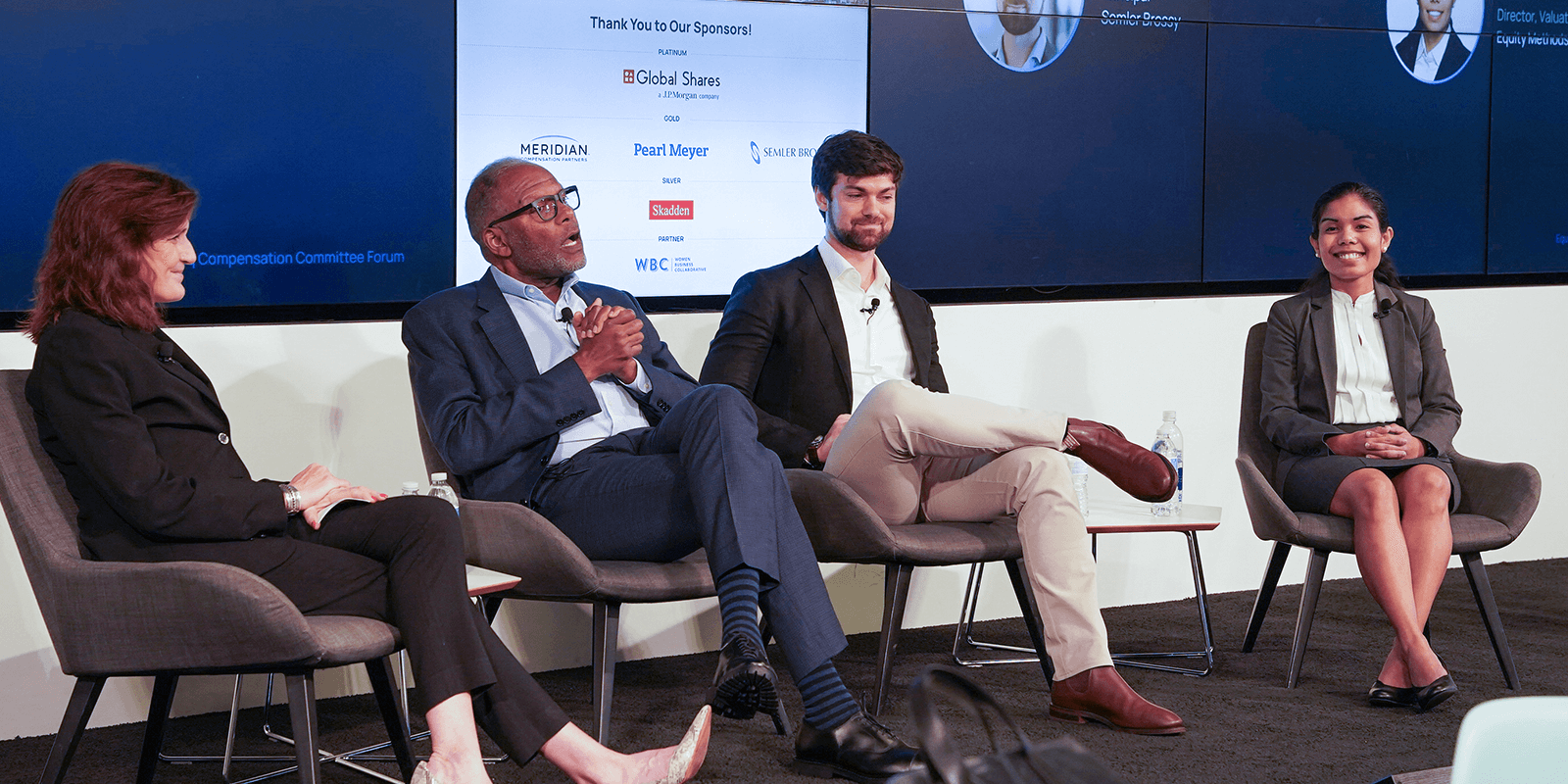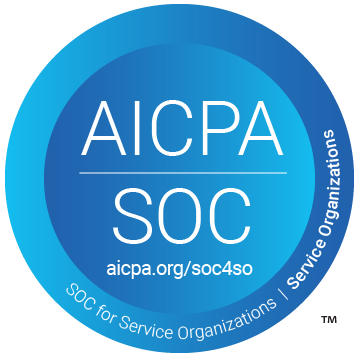Balancing Pay Equity and Incentivizing High Performance
Blog Series: Recapping the Compensation Committee Forum
February 26, 2024
Joyce Chen

Equilar and Nasdaq partnered up and hosted a Compensation Committee Forum this past fall. One of the feature panels focused on balancing pay equity and incentivizing high performance. The panel was moderated by Gwen Young, who is the CEO of the Women's Business Collaborative. Young was joined by David Fields, a Board Member at East Group Properties and CBL and Associate Properties, Phillip Pennell, a principal at Semler-Brossy, and Therese Sebastian, Director of Valuation and HR Advisory Services at Equity Methods.
Gwen Young: I would love each of you to share your lens on how you view, work or approach pay equity challenges.
David Fields: In today's discussion, as a sitting executive and compensation committee member, I examine the factors influencing upper-echelon compensation. Exploring recruitment processes, talent incubation and organizational culture, I emphasize diversity and relationships. Drawing on my experience in southern-based boards, particularly family-founded ones, I highlight the impact of culture, legacy and traditions on board dynamics.
Young: How are you looking at pay equity and incentivizing performance in what you do?
Phillip Pennell: As a compensation consultant, I address pay equity challenges through three lenses. Firstly, in direct pay decisions, I focus on market data, company context and executive individuality. Secondly, in the broader talent space, I navigate evolving compensation committee mandates, including diversity metrics and pay equity. Lastly, I consider the growing influence of ESG metrics in incentive plans, tying them to cultural values amidst regulatory complexities.
Therese Sebastian: I approach pay equity from an analytical to a strategic framework, leveraging my background at Equity Methods—a consulting firm specializing in equity compensation. Initially focused on valuation and financial compliance, we now conduct pay equity audits, aiding companies in measuring and improving pay practices strategically, identifying root causes and implementing solutions.
Young: Why is it important for companies to not just stop at paying the same for the same amount of work? Why are they stopping there and what should they be doing?
Sebastian: Pay equity in the U.S. emphasizes equal pay for similar work, considering factors like role, location, experience and performance. In the legal sense, that is the framework that companies in the U.S. need to abide by. Analysis often reveals a small pay gap, ranging from 3% to 1% with some companies finding none. As companies mature, the focus must extend beyond pay equity to tackle promotion equity, ensuring fair career progression and addressing representation bottlenecks in senior positions.
Gwen: How is the recent Supreme Court ruling on affirmative action impacting these conversations?
Pennell: Companies face challenges addressing broader diversity gaps beyond pay equality, particularly in gender and racial representation. The recent Supreme Court ruling was very directly targeted at college admissions around whether or not race can be a consideration. Companies assert a commitment to diversity, but the politically charged nature of diversity, equity and inclusion (DEI) prompts strategic reevaluation. Legal experts express nervousness about resembling quotas, advocating for equality of opportunity to build diverse leadership over time.
Young: How important is transparency in addressing gender and diversity pay gaps within compensation structures and the organization broadly?
Fields: The notion of transparency is an important counterbalance to potential inequities and bias. It positions us in a way that objectivity occupies a higher position than subjectivity. It has to be paired with a commitment from leadership to make sure that the intention behind transparency is not diminished or compromised.
Sebastian: Skepticism often arises due to a lack of transparency in pay decisions, hindering trust between employees and senior management. While companies genuinely aim to reward fairly, the current push for transparency seeks to bridge the gap, promoting a more constructive relationship between organizations and their workforce.
Pennell: Establishing a pay philosophy becomes crucial in guiding decisions, ensuring equity and addressing issues related to diversity and pay. Regularly questioning the implications for pay equity and diversity encourages proactive problem-solving.
Young: What are companies doing in terms of pay equity that is working?
Sebastian: A consistent policy is crucial, exposing issues when factors like performance lack supporting data. Challenges arise when location isn’t adjusted for remote work. Successful companies articulate key factors, support decisions with data and address broader diversity challenges.
Pennell: Top leadership commitment drives diversity and inclusion progress. Human resources (HR) also plays a crucial role, with a shift towards an empowered chief diversity officer taking ownership and driving progress.
Young: The workforce is adapting and changing. What is working?
Fields: Top leadership commitment is essential for thriving workplace adaptation. CHROs drive change, foster authenticity and support individuals for pay equity and role advancement. Ingraining diversity into organizational values and encouraging organic creativity contribute to positive change. Effective storytelling becomes pivotal in communicating progress within the evolving workforce.
Watch the full panel session on demand. To view key takeaways from the Forum, download our event highlights.
Contact

Joyce Chen
Associate Editor at Equilar
Joyce Chen, Associate Editor at Equilar, authored this post. Please contact Amit Batish, Senior Director, Content & Communications, at abatish@equilar.com for more information on Equilar events, research and analysis.
 Roles
Roles












